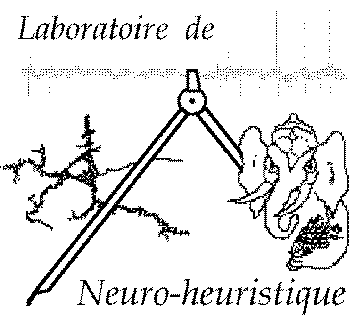
 Data Analysis for Neuroscience
Data Analysis for Neuroscience

|
|
A critical feature of brain theories is whether neurons convey a noisy rate code or a precise temporal code. One of most valuable ways to test these theories consists in collecting the electrophysiological activity of cell assemblies under several experimental conditions. The sequences of cell discharges--the spike trains--form time series whose dynamics is strongly related to the information processing carried out in the brain areas under study.
Through the multivariate time series implementation of the OpenAdap.net project applied to the specific need of spike train analyses we are committed to develop open access Data Analyses for the Neuroscience for graduate students, PhD students as well as senior scientists working in electrophysiology. We expect that these people work in a University, High School or other public or private educational department. The original programs designed for electrophysiological analyses have been generalized in order to accept data of several types of discrete time series. A current field of interest is represented by the simulation of neural networks. In this field we collaborate with the simulation program called XNBC developed at the Jean-François Vibert.
The overall objective of this project is to create an integrated multi-platform software allowing the neuroscience research scientist, starting at the level of graduate students, to perform a comprehensive series of electrophysiological data analyses without the need of a long training with a computer specific software. This goal can be achieved by means of using the Internet browser as a multipurpose graphic terminal. The possibility to use remote computers for data analysis represents an important feature of the general framework OpenAdap.net and is based on the powerful network features provided by the Java language. Our purpose is to provide a user-friendly computational framework that is compatible with a more general concept of Virtual laboratory, i.e. a laboratory where data collection, computational power for analysis and display of results can be distributed over a computer network, like Internet.
The data structure to be used with our programs is described in detail here but we have developed conversion and data manipulation tool for the most common data acquisition devices.
References
—
Abeles, M. (1982)
Local cortical Circuits: an electrophysiological study, Springer Verlag, Berlin.
—
Abeles, M. (1991)
Corticonics: neural circuits of the cerebral cortex, Cambridge Univiversity Press, Cambridge.
—
Rieke, F., Warland, D., de Ruyter van Steveninck, R. R., Bialek, W. (1997)
Spikes: Exploring the Neural Code, Cambridge, Massachussets, MIT Press.
—
Miller, R., ed. (2000)
Time and the Brain, Harwood Academic Publishers, Singapour.